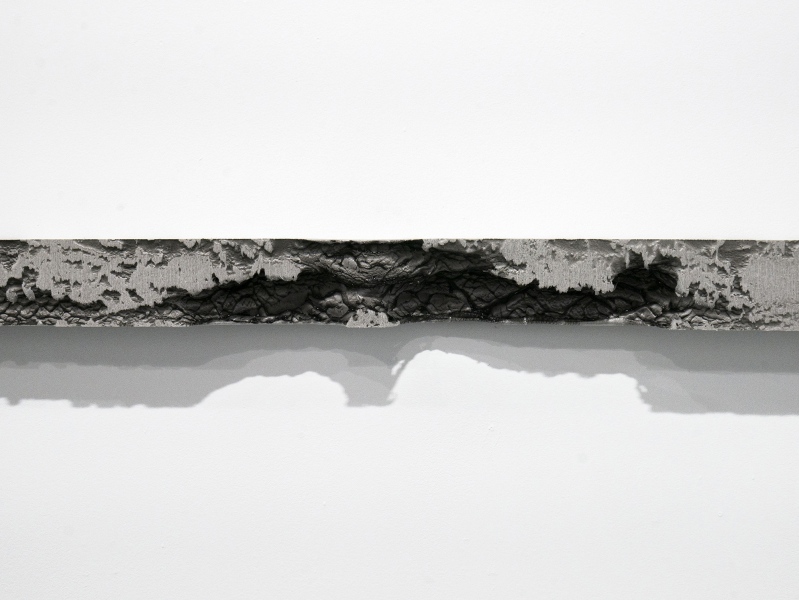-

299: América (OMS, 2018) Poliestireno extruído. 10 x 274 x 10 cm. 2019
-
299: America (OMS, 2018) Extruded polyesterene. 10 x 274 x 10 cm. 2019


299: América (OMS, 2018), una viga de poliestireno extruído color grafito montada de forma horizontal a la pared –que a ratos da la impresión de ser un poste de concreto puro–, es la traducción a escultura de una estadística que reúne a los países que componen la tasa de suicidios de la sección correspondiente a América proveniente de un documento original publicado por la OMS (Organización Mundial de la Salud) durante el año 2018.
El poliestireno extruído (XPS) es fabricado como aislante para condiciones de humedad y temperatura, y son precisamente estos dos factores con los que se ha trabajado la pieza a modo de bajorrelieve: creando depresiones en el material mediante agua y calor, que sitúan el resultado entre un tejido humano y bordes geográficos, atravesando a lo largo de esta franja de territorio el mapa de un cuerpo y un continente, más allá de la planitud del dato desde donde proviene.
Esta obra se permite un análisis de la inexactitud de las estadísticas de la salud mundial y la escala de las personas dentro de estos datos. Identificar cómo éstas modulan la comprensión de la sociedad y sus territorios, mientras los individuos, sumidos dentro de estas enormes cifras construyen la forma y tejido de nuestro paisaje social.
-
299: América (OMS, 2018), a graphite-colored extruded polystyrene beam mounted horizontally to the wall - which at times gives the impression of being a pure concrete pole - is the translation into sculpture of a statistic that brings together the countries that make up the suicide rate of the section corresponding to America from an original document published by the WHO (World Health Organization) during 2018.
The extruded polystyrene (XPS) is manufactured as an insulator for conditions of humidity and temperature, and it is precisely these two factors with which has been worked the piece as a bas-relief: creating material depressions through water and heat, which place the result between a human tissue and geographic borders, crossing along this strip of territory the map of a body and a continent, beyond the flatness of the data from which it comes.
This work allows itself an analysis of the inaccuracy of world health statistics and the scale of people within this data. Identify how they modulate the understanding of society and its territories, while individuals, plunged into these enormous figures build the shape and fabric of our social landscape.